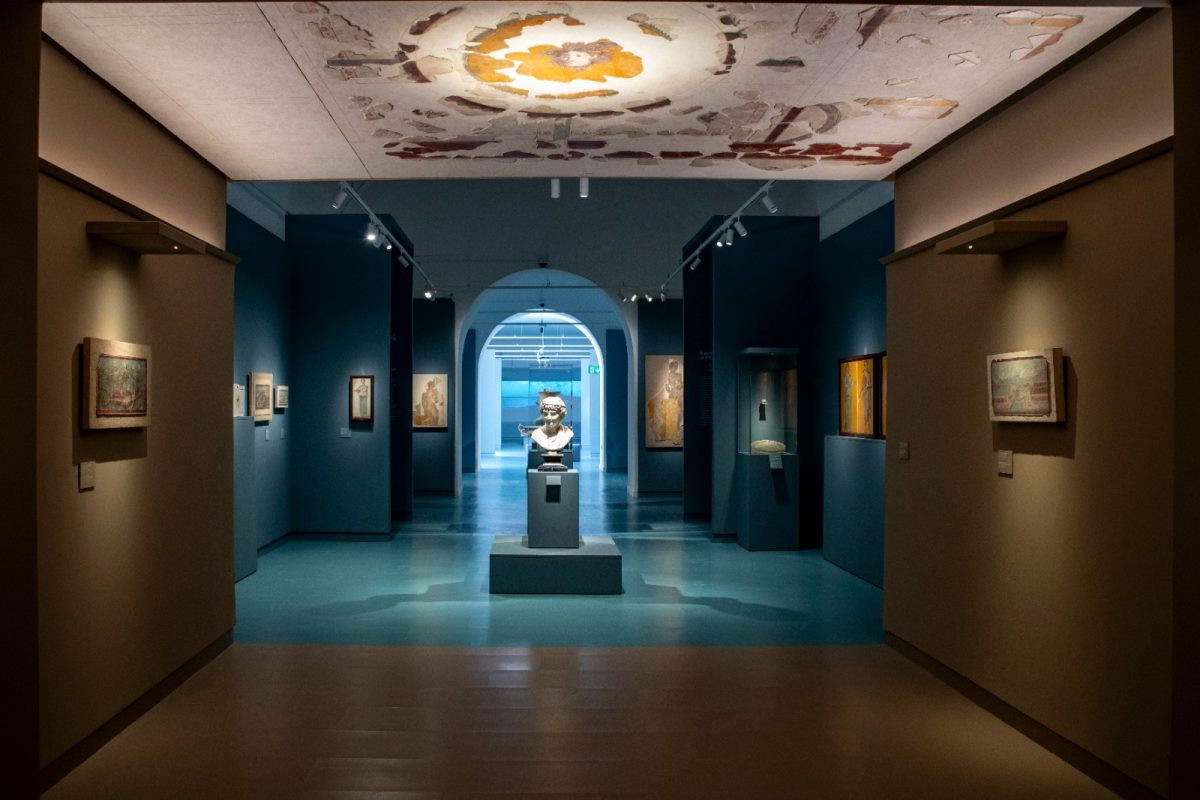The Libero D'Orsi Archaeological Museum of Stabia is enriched with new artifacts from the MANN
As of July 3, the Libero D’Orsi Archaeological Museum of Stabia is expanding its exhibit with new finds: these are an obsidian cup with Egyptian motifs and a bust-portrait of a Julio-Claudian princess, attributed to Claudia Octavia, daughter of Claudius and first wife of Nero, coming directly from the collections of the MANN National Archaeological Museum in Naples along with frescoes on display for the first time. The finds are on loan, thanks to theEnhancement Agreement signed in 2023 between the Archaeological Park of Pompeii and MANN to enhance the Stabian heritage. Curators of the new display are Maria Rispoli, director of the museum, and Teresa Argento, Restoration Officer at the Reggia di Quisisana.
The incoming one is one of three obsidian cups, decorated with precious stones and Egyptian motifs, found at Villa San Marco by Libero D’Orsi. On May 21 and 22, 1954, during excavation work in room No. 37, numerous fragments of finely wrought obsidian and a considerable amount of gold threads and tiny inlays of malachite, yellow jasper, lapis lazuli, white and pink coral, some still embedded in lattices of gold foils, were found, forming a rich inlay decoration. Sensing the exceptional nature of the find, the artifacts were immediately transferred to the restoration laboratory of the National Archaeological Museum in Naples.
Restoration work made it possible to reassemble two skyphoi (cups) with Egyptian decoration (Cup A and Cup B), a smaller skyphos with plant elements preserved almost in its entirety (Cup C), and part of a phiale (cup) with a Nilotic scene. On Cups A and B are depicted cult scenes of Egyptian tradition; Cup C, which will arrive at the Archaeological Museum of Stabia, is characterized by a colorful decoration, inlaid with gold and precious stones in red, green, white, pink, yellow and blue, consisting of leaves, flowers and a bird resting on the central stem. The type of depiction harks back to Egyptian models, a fashion that became established in Rome after the conquest of Egypt following the Battle of Actium in 31 BC. The preciousness of the materials used and the technique, which presumes highly skilled artisans, make these vases masterpieces of Alexandrian craftsmanship and especially hint at an exclusive patronage.
The bust-portrait of a Julio-Claudian princess, attributed to Claudia Octavia, daughter of Claudius and first wife of Nero, was found in the lararium of the small peristyle of the villa of Anteros along with the inscription of Anteros and Heracleo, also on display in the museum. It is a dedication to the Lares and family by Anteros and Heracleo, a freedman and a servant of the family in which they served. The absence of an indication in the text of the gens, to whom the dedication is addressed, would suggest the high rank of this family to such an extent that its name is not indicated, given its notoriety. They could therefore be freedmen and members of the imperial family, who kept and displayed a portrait of the imperial princess in their home.
“The archaeological museum of Stabia is increasingly the protagonist of a territorial network of sites and places of culture of inestimable value,” says the director of the Archaeological Park of Pompeii, Gabriel Zuchtriegel. “We already have a meeting scheduled with the newly elected mayor of Castellammare, Luigi Vicinanza, to talk about future projects. Public transportation connections, decorum and signage are some priorities that I would like to address together with the municipal administration. In the meantime, work is being done on visitor services at the Stabia Villas, where major restoration and accessibility work is underway.”
 |
| The Libero D'Orsi Archaeological Museum of Stabia is enriched with new artifacts from the MANN |
Warning: the translation into English of the original Italian article was created using automatic tools. We undertake to review all articles, but we do not guarantee the total absence of inaccuracies in the translation due to the program. You can find the original by clicking on the ITA button. If you find any mistake,please contact us.



























